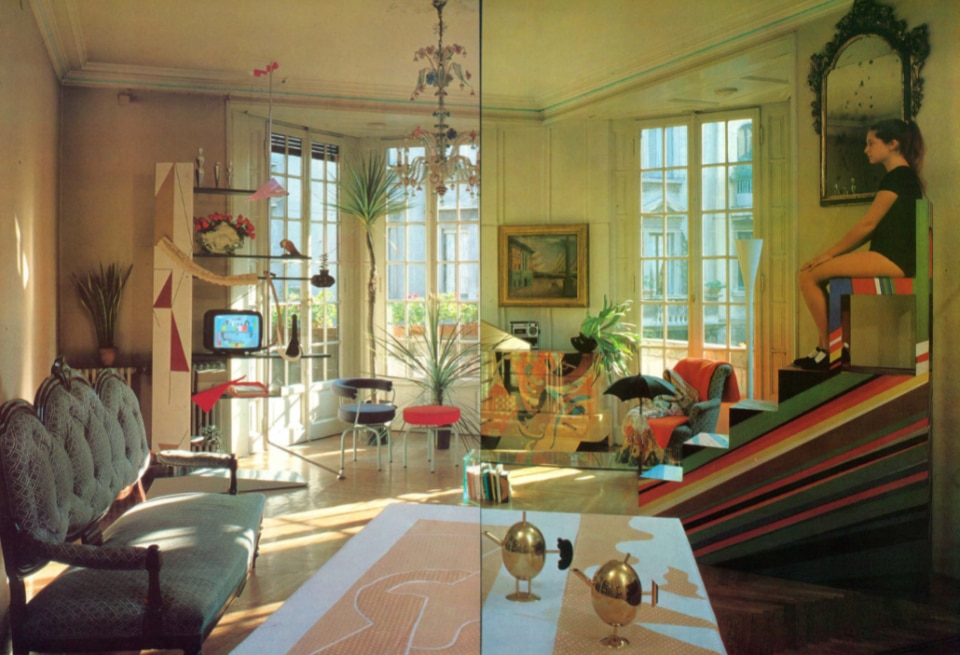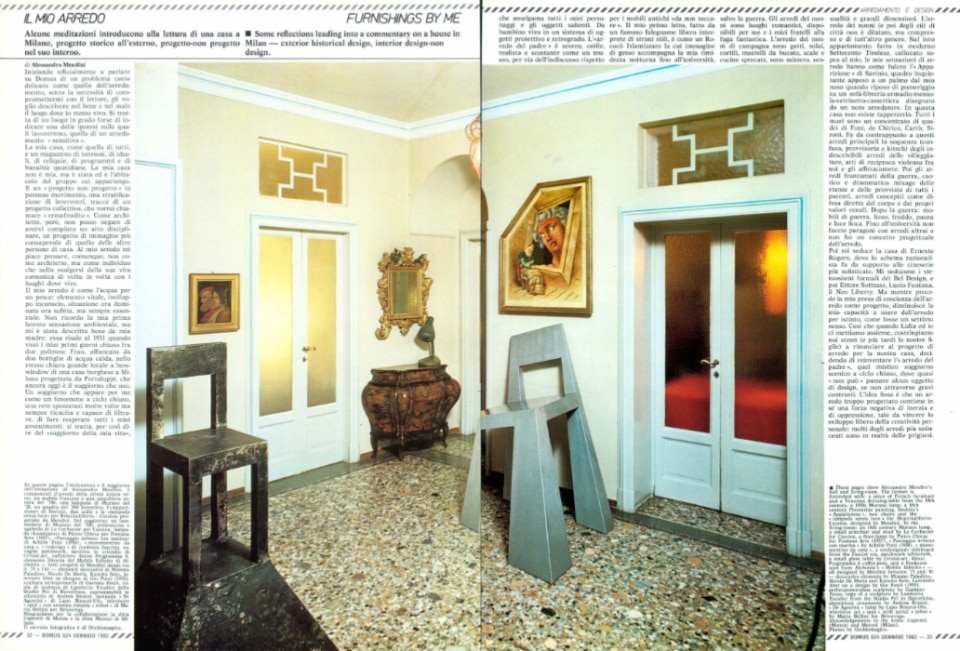Reinventing “the father's interior” after a life spent in a profound exchange with the house where one was born: it was June 1982, and Alessandro Mendini, then director of Domus, told on issue 624 how his house was perhaps the most intensely practiced ground of all the experiments and reflections he was conducting in those years, from the anti-productive controdesign (counter-design) to the redesign returning to modern icons and enriching them with new meanings and decorations. A story that starts from the intimate premises of a Milanese family history and then goes on to embrace an entire century of the history of architecture, art, and design.

Furnishing by me
In beginning officially to talk in Domus about such a delicate subject as interior design, I feel I must compromise myself with the reader. I want to describe for better or worse the place I personally live in. It is perhaps a place with the capacity to suggest one of the hypotheses which we shall be working on: that of a “sensitive” interior design.
My house, like everybody's, is a warehouse of tensions, ideals, relics, programmes and everyday banality. My house is not mine, but it has been and is the dwelling of the group to which I belong.
It is a “project-non-project” in everlasting movement, a stratification of efforts, traces of a collective design, which I should like to call “hermaphrodite”. As an architect, however, I cannot deny that I have performed a disciplinary act in it, a more conscious image project, than the other people in the house have. I like to think of my interior decoration, therefore, not as an architect, but as an individual who in the course of his life communicates with the places he lives in.
My interior décor is like water for a fish: it is the vital element, the unconscious envelope, a situation now dominated now undergone, but always essential. I do not remember my first latent environmental sensa-tion, but it was well described to me by my mother. It dates from 1931, when I spent my early days closed between two Frau arm-chairs, with two bottles of hot water next to me, in the same big, well-lit bow-window room of a bourgeois Milan house designed by Portaluppi, which is still the drawing-room I use today. For me it is like a closed cycle, a net broken many times but always sewn together again and capable of filtering, of allowing all my events to breathe. It is, so to speak, the “drawing-room of my life”, which amalgamates all the characters and salient objects of that life.

As a child I lived in a protective and backward system of objcets. “Father's decoration” was as severe, hostile, realistic and unfriendly as a museum, because of the indisputable respect demanded for antique furniture “not to be touched”. My first bed made by a famous carpenter who freely interpreted peculiar styles, was like an islamitic rococo the chalk image of wich accompanied my nocturnal shyness up till university, except for the war. My grandparents’ interiors were romantic places where my brothers and sisters and I could indulge in flights of fancy.
The interiors of my “country” grandparents were cats, attics, courtyards, wash-tubs, wasted staircases and kitchens; they spelt mystery, sensuality and spacious-ness. The interiors of my grandparents' (and later uncles and aunts') house in the city were not spread out, but compressed and of quite a different kind. In their apartment, in a modern Tyrolean-eighteenth century style, situated above my house, my sensations of interior design had as their fulcrum Sanvinio's “Apparizione”, a disquieting painting that hung just above my nose when I rested in the afternoon on a sofa-bookcase-cupboard-shelf-showcase-chest-of-drawers designed by a well known interior decorator.
In this house there was no wallpaper, only a solid mass of paintings by Funi, de Chirico, Carra and Sironi. These principal interiors were offset by the higgledy-piggledy, provisional and kitsch sequence of indescribable holiday furnishings, acts of reciprocal violence between us and our landladies. Then the fragmented decor of the war, a chaotic and dramatic medley of the rooms and supplies of all our relatives, conceived as a direct defence of the body and of one's own venal values. After the war came war furniture, high school, cold, fear and dim light. Up till university I made no comparisons with other people's interiors and I had no design concept of interior décoration.
Then I was seduced by Ernesto Rogers' house, where the rationalist scheme acted as la support for the most sophisticated chinoiserie. I was seduced by the formal virtuosities of Bel Design, and then Ettore Sottsass, Lucio Fontana and “Neo Liberty”. But as my awareness of interior design grew, my capacity to use decoration by instinct, as if it were a seventh sense, diminished.
So when Lidia and I set up house together, we forced ourselves (and later our daughters) to do without an interior design scheme, deciding instead to reinvent “Father's interior” – that mystic, closed cycle of a scenic living-room, where almost no design object can get in unless by heavy to contrast. The fixed idea is that an over-designed interior contains in itself a negative force of inertia and oppression which can defeat the free development of personal creativity. Many of the do most seductive interiors are really prisons.

